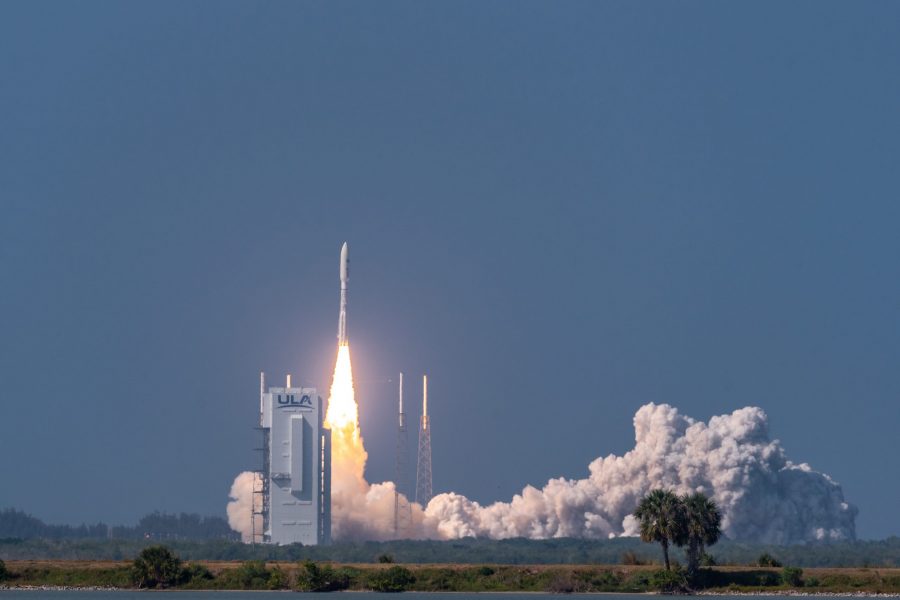Florida’s 45th Space Wing is aiming to keep as much regular order as possible as the coronavirus pandemic unfolds, reviewing launch plans and hoping the virus remains at bay.
Patrick Air Force Base and Cape Canaveral Air Force Station aim to execute 49 military and commercial launches in 2020. While the Space Force is deciding whether to go forward with each event on a case-by-case basis, the Florida Space Coast has put eight rockets into orbit so far this year and expects it will stick to its overall plan for 49 launches, even if some launch dates shift.
“I don’t see a ripple yet. I’m not saying that that can’t happen,” Wing Commander Brig. Gen. Doug Schiess said on an April 9 call with reporters. “If we were to have folks that were to get sick, not just us, if our launch providers or if something else were to happen, obviously that could push some launches into the next year.”
Still, Schiess says work is moving along well. The two facilities have shrunk the number of on-site employees to mission- and services-essential personnel only, are practicing social distancing when possible, and have employees cover their faces with cloth. No one who lives or works at Patrick or the Cape has tested positive for the virus, though the wing has seen cases at its clinics that serve retirees and other beneficiaries. The wing has administered fewer than 100 tests so far.
Certain launches are able to move ahead as planned if officials deem the risk low enough, while one event has already changed to occur later in the year. The Space Force is delaying the launch of its third Lockheed Martin-built GPS III satellite until June 30 or later to protect its employees from illness. The launch was originally scheduled for later this month, and the decision to move it will be revisited in May. The Space Force still plans to launch three GPS satellites in 2020.
Conversely, SpaceX’s sixth launch of Starlink satellites is slated for April 16. Schiess argues that event is less risky than a national security launch like GPS III because SpaceX’s Falcon 9 rocket uses an autonomous flight safety system that requires fewer people on hand. Fewer Airmen support commercial launches like Starlink, to ensure public safety and resource protection, than the Space Force needs to run its own missions. About 200 Department of the Air Force personnel will be involved in the Starlink launch.
“This is probably our smallest that we need and at this current time, how the personnel are doing, we believe that we can execute this mission with no [harm] to resource protection or public safety,” Schiess said. “It keeps our folks trained and ready and it then doesn’t have an impact on … the launch manifest later in the year.”
As for the companies that work at Cape Canaveral, like SpaceX, Blue Origin, and United Launch Alliance, their employees can still come into the installation as long as they are deemed essential for a particular job and follow health precautions.
Two national security space launches managed by the Space Force are also on the schedule in the next three months.
Facilities upgrades haven’t taken a hit as a result of the virus, although they could still be affected by travel restrictions and other issues, the wing commander added. Projects underway include growing the Eastern Range’s ability to provide helium, a key rocket commodity, to launch companies, and to make fire safety infrastructure more efficient.
Schiess said the wing’s activities related to transitioning from the Air Force to the Space Force are largely unaffected. Patrick and the Cape were on track to be renamed as Space Force bases, but those ceremonies have been postponed until people can safely gather again. The wing did host Space Force “roadshows” in March to share information with Airmen about voluntarily transferring into the new service and answering other questions. Those presentations at other bases could move online.
“Lot of excitement with the Space Force, still. People are looking forward to moving out on that,” Schiess said.
